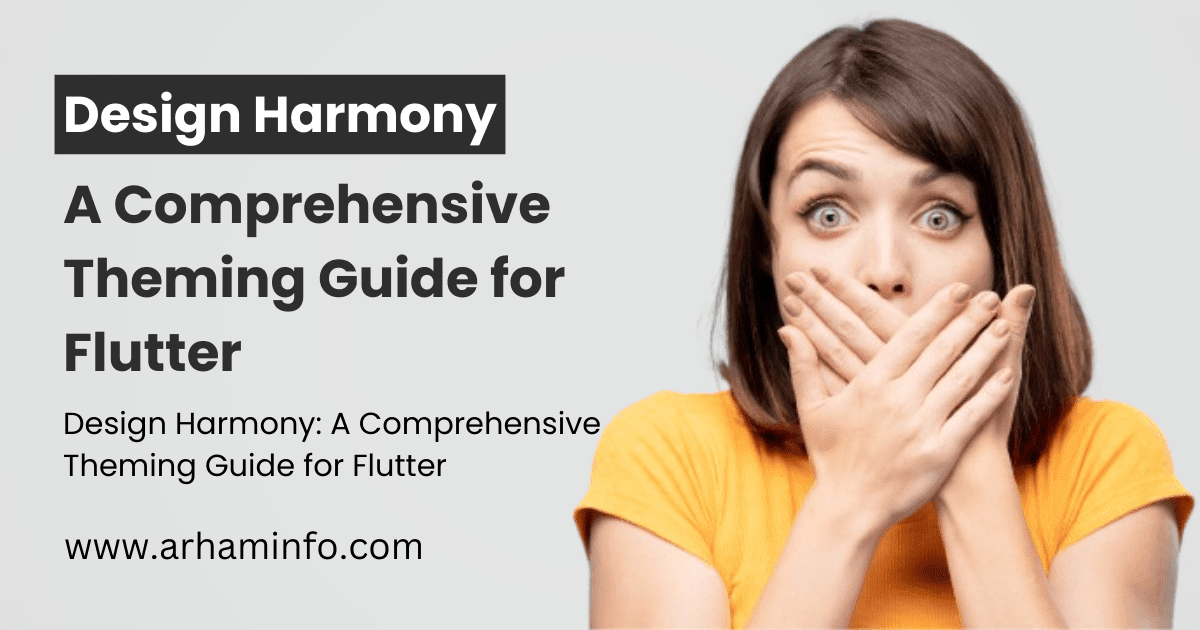Design Harmony: A Comprehensive Theming Guide for Flutter
Introduction
In today's competitive landscape of mobile app development, crafting visually captivating and cohesive designs is a crucial aspect of creating successful applications. Flutter, Google's UI toolkit, offers developers a robust platform for building natively compiled applications across various platforms, including mobile, web, and desktop, all from a single codebase. Within Flutter, achieving design harmony through effective theming is pivotal in delivering engaging user experiences and maintaining brand consistency.Understanding Theming in Flutter
Theming in Flutter encompasses the process of establishing a consistent visual language across an application. This involves defining a coherent set of design elements, such as colors, typography, shapes, and spacing, that are applied universally throughout the app's interface. By implementing a well-defined theming strategy, developers can streamline the design process, enhance user experience, and reinforce brand identity across different platforms and devices.The Importance of Design Harmony
Design harmony refers to the seamless integration of various design elements within an application to create a visually appealing and coherent user interface. It involves striking the right balance between different design components to ensure a consistent and pleasing aesthetic. Achieving design harmony is critical for providing users with an intuitive and enjoyable experience while also reinforcing brand recognition and identity. In Flutter development, design harmony can be attained through meticulous attention to detail and adherence to established design principles.Creating a Theme in Flutter
Establishing a theme in Flutter involves defining a set of design properties that govern the visual appearance of widgets throughout the application. These properties serve as the foundation for the app's overall design language and are applied consistently across different screens and components.Defining Colors
Colors play a pivotal role in shaping the visual identity of an application. In Flutter, colors can be defined using the Color class or by referencing predefined color constants. When defining a color palette for your app, it's essential to consider factors such as brand identity, accessibility, and visual hierarchy. Careful selection and implementation of colors can help convey meaning, establish hierarchy, and evoke specific emotions within the user.Typography and Font Styles
Typography significantly influences the readability and aesthetic appeal of an application. In Flutter, text styling can be customized using the TextStyle class, allowing developers to specify properties such as font family, size, weight, and color. When selecting typography for your app, it's crucial to prioritize readability across various screen sizes and devices. Consistency in font styles and sizes helps establish a cohesive visual identity and enhances the overall user experience.Shapes and Borders
Shapes and borders contribute to the structural integrity and visual hierarchy of an application's interface. In Flutter, shapes can be defined using the ShapeBorder class, offering a range of options such as rounded rectangles, circles, and custom paths. By applying consistent border styles and shapes across different widgets, developers can create a sense of cohesion and organization within the app's design.
Spacing and Layout
Spacing and layout play a vital role in defining the structure and flow of an application's interface. In Flutter, spacing can be managed using properties such as padding and margin, which help create visual separation between elements and improve readability. Thoughtful layout design ensures that content is presented in a clear and organized manner, enhancing the overall user experience.Best Practices for Theming in Flutter
To ensure effective theming and design harmony in Flutter applications, developers should adhere to the following best practices:Consistency is Key
Maintain consistency in design elements such as colors, typography, spacing, and layout throughout the application. Consistent design creates a sense of familiarity and coherence for users, enhancing usability and overall satisfaction.Accessibility Matters
Prioritize accessibility by choosing colors and typography that meet accessibility guidelines, ensuring that all users, including those with visual impairments, can interact with the application comfortably.Stay True to Brand Identity
Align the application's design with the brand's identity and values by using colors, typography, and imagery that reflect the brand's personality. Consistent branding reinforces brand recognition and strengthens the overall brand image.Test Across Devices
Test the application's design across various devices and screen sizes to ensure that it remains visually appealing and functional across different platforms. Device testing helps identify and address any design inconsistencies or layout issues that may arise.Iterate and Refine
Continuously iterate and refine the application's design based on user feedback and evolving design trends. Iterative design allows for continuous improvement and optimization of the user experience, ensuring that the application remains relevant and engaging over time.Conclusion
In the realm of Flutter development, the pursuit of design harmony through comprehensive theming is not just a preference but a necessity. As this guide has elucidated, crafting visually appealing and cohesive designs involves meticulous attention to detail across various design elements such as colors, typography, shapes, and spacing.By adhering to best practices for theming in Flutter, developers can create applications that not only dazzle the eye but also provide a seamless and intuitive user experience. Consistency in design elements, prioritization of accessibility, alignment with brand identity, thorough device testing, and iterative refinement are all integral components of achieving design harmony.
In essence, effective theming in Flutter is not merely about aesthetics; it's about fostering a deep connection between the user and the application, enhancing usability, and reinforcing brand identity. By embracing the principles outlined in this guide, developers can elevate their Flutter applications to new heights of visual excellence and user satisfaction. So, let the journey towards design harmony begin, and may your Flutter creations captivate and delight users around the world.

0 Comments